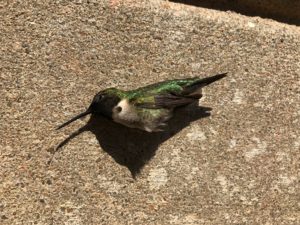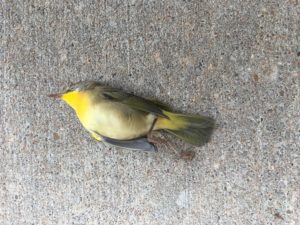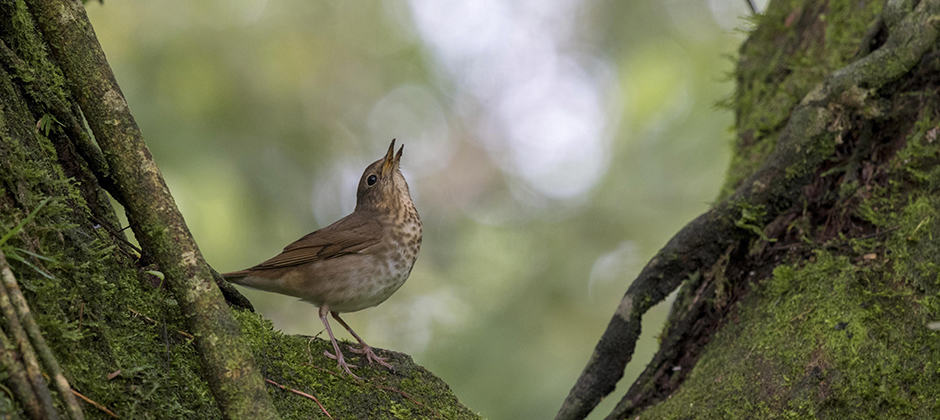Share this article
Building collision survey identifies vulnerable birds
Millions of birds meet an untimely end by flying into buildings every year, but researchers weren’t always clear whether specific types were more vulnerable than others.
Previous research showed that 599 million birds are killed in the United States every year by striking windows. In another study, researchers discovered that birds that make faint, high-frequency chirps during nighttime migration were more likely to hit buildings than those that didn’t.
Now, researchers tapped into a large survey of bird deaths at university campuses in North America to identify which birds are more often the victims of window strikes.
“Species that are migratory, are woodland inhabitants and insectivores collide more,” said Jared Elmore, a PhD candidate in ecology at Oklahoma State University and the lead author of a study published recently in Conservation Biology.

This ruby-throated hummingbird (Archilochus colubris) struck a building. Credit: Tim O’Connell
Elmore and dozens of co-authors involved in the Ecological Research as Education Network, an organization that brings together universities to work on collaborative projects, conducted standardized carcass surveys across 40 universities in Canada, the United States and Mexico in the fall of 2014.
An analysis of this data showed that seven of the top 10 bird species they identified as most vulnerable to building collisions, such as black‐throated blue warblers (Setophaga caerulescens), had previously been identified in past studies as vulnerable. But the researchers also uncovered other vulnerable species like white‐breasted nuthatches (Sitta carolinensis).
They also found that birds with certain characteristics were more vulnerable than others. Birds that were migratory, as well as insect-eating birds, were more likely to strike buildings than others. Elmore said the latter may represent a type of ecological trap in which birds follow insects attracted to artificial lights around buildings at night. Likewise, nocturnal migrating birds may be attracted to artificial light on their journeys.
Woodland birds were also more vulnerable to bird strikes. The researchers found that Swainson’s thrushes (Catharus ustulatus), in particular, were more likely to strike buildings that were surrounded by bushes or other vegetation.

A common yellowthroat (Geothlypis trichas) struck a building. Credit: Tim O’Connell
The findings suggest managers may want to deploy different strategies to avoid bird strikes when focusing on conserving certain species like Swainson’s thrush.
“Building in dense woodland areas might kill more woodland birds,” he said.
Elmore noted that there are ways to reduce bird strikes on some buildings. Large structures with more glass are responsible for more deaths, he said.
Another study showed that glass patterns can deter birds from slamming into them.
“That tells us that, for the most part, if we treat buildings in bird-friendly ways, that’s going to give us the biggest bang for our buck in terms of decreasing collisions for birds,” Elmore said.
Header Image:
Swainson’s thrushes are among the birds vulnerable to building strikes, according to a recent study.
Credit: Hans Norelius








